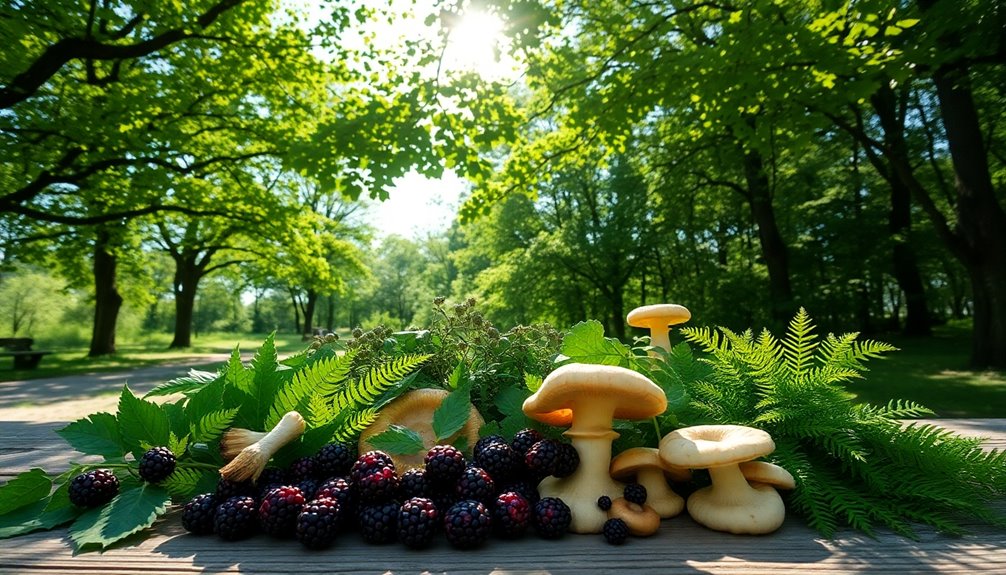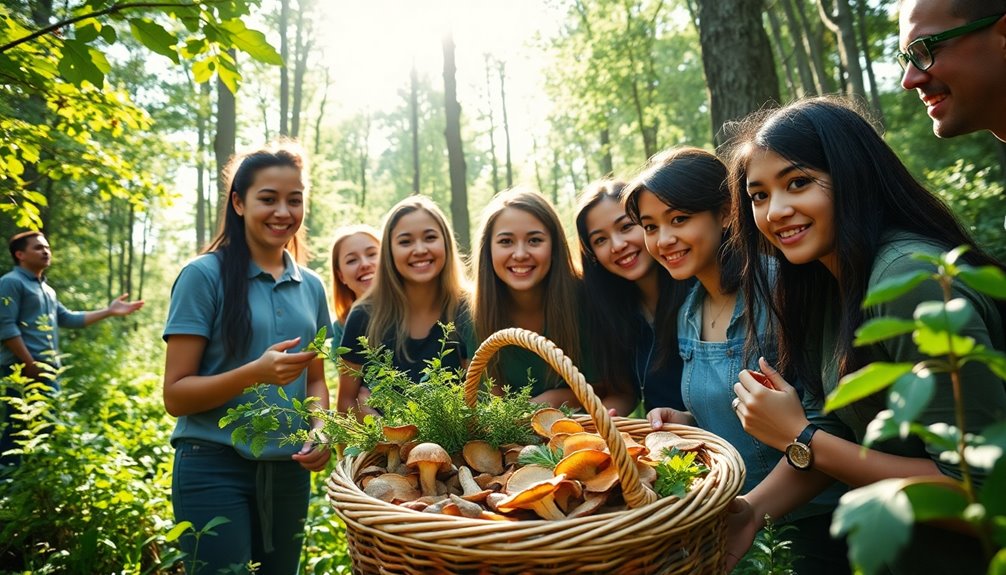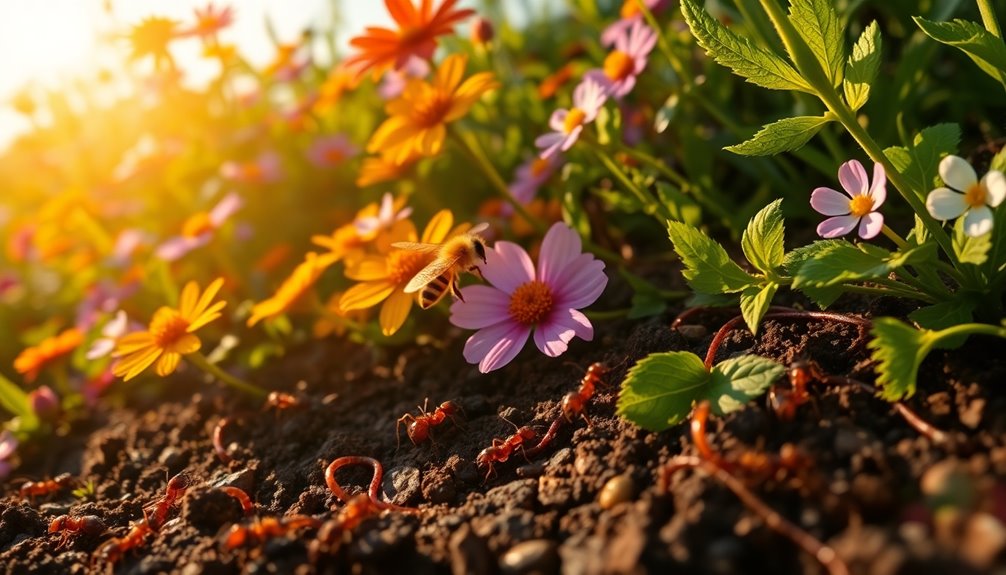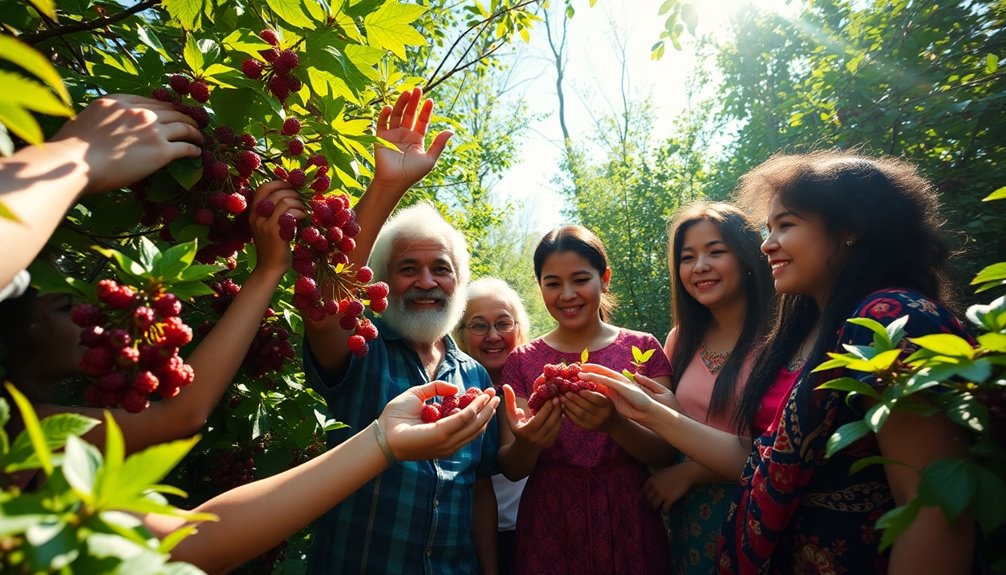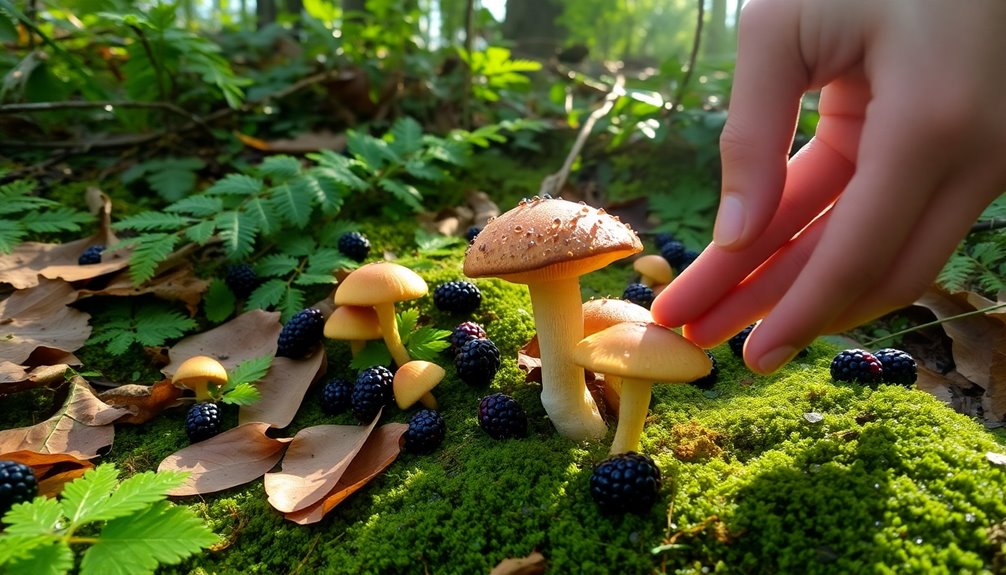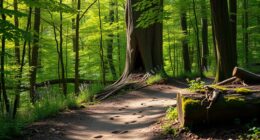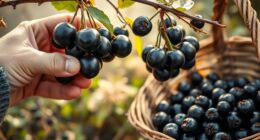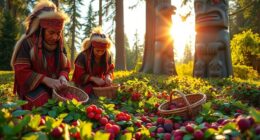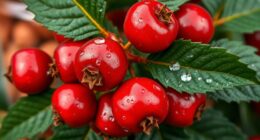Yes, you can forage in Illinois State Parks, but you must follow specific rules. Foraging is usually allowed only in designated areas where hunting is permitted. Most forest preserves restrict foraging, and many nature areas prohibit it to protect local ecosystems. Always check local regulations and contact the Illinois Department of Natural Resources for the latest updates. It's crucial to practice sustainable harvesting, taking only what you need and allowing for regrowth. By being informed about these guidelines, you'll guarantee a responsible foraging experience, and if you want more insights on this topic, there's plenty to uncover.
Key Takeaways
- Foraging is permitted in designated areas of Illinois State Parks, especially where hunting is allowed.
- Always verify specific park regulations and obtain necessary permits before foraging.
- Sustainable harvesting practices are encouraged to maintain ecosystem balance and promote regrowth.
- Most forest preserves prohibit foraging, so check local ordinances for specific rules.
- Respect wildlife protection regulations; collecting plants and animals is generally not allowed.
Understanding Foraging Regulations
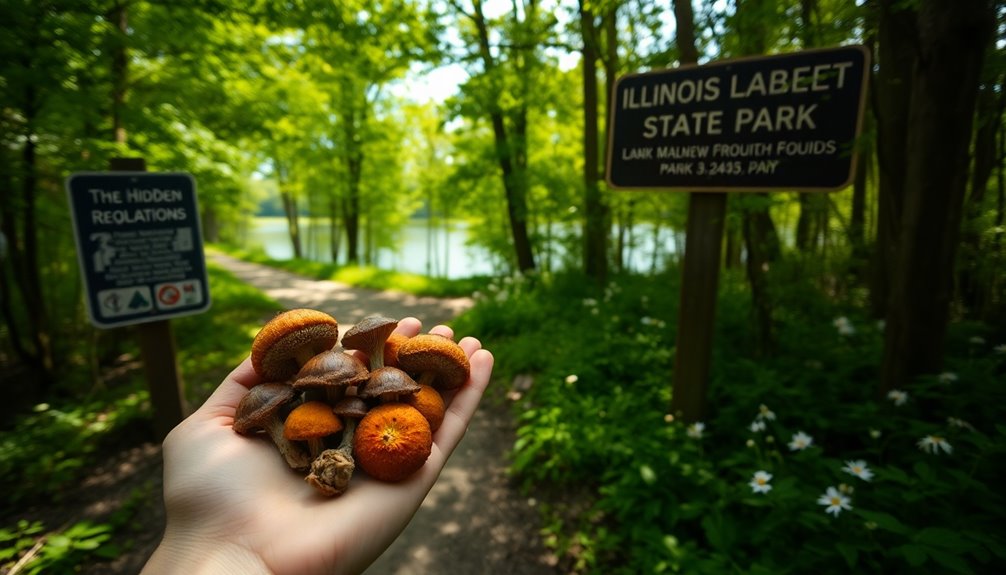
When foraging in Illinois State Parks, it's vital to understand the specific regulations that apply. Foraging is permitted, but the foraging rules can vary considerably from park to park, as outlined by the Illinois Department of Natural Resources.
You'll find designated areas within some parks where foraging is allowed, especially in regions where hunting is also permitted. However, keep in mind that restrictions exist to protect delicate ecosystems, particularly in nature areas.
In Illinois forest preserves, foraging is generally not allowed, which could limit your options. If you're interested in morel mushroom hunting, be aware that it often comes with strict regulations. Local ordinances may impose even further restrictions, so it's important to check the specific park and county rules before you head out.
To practice sustainable foraging, remember to take only what you need and leave some edibles behind. This approach helps maintain ecosystem balance and guarantees that natural resources remain available for others.
Permitted Areas and Exceptions
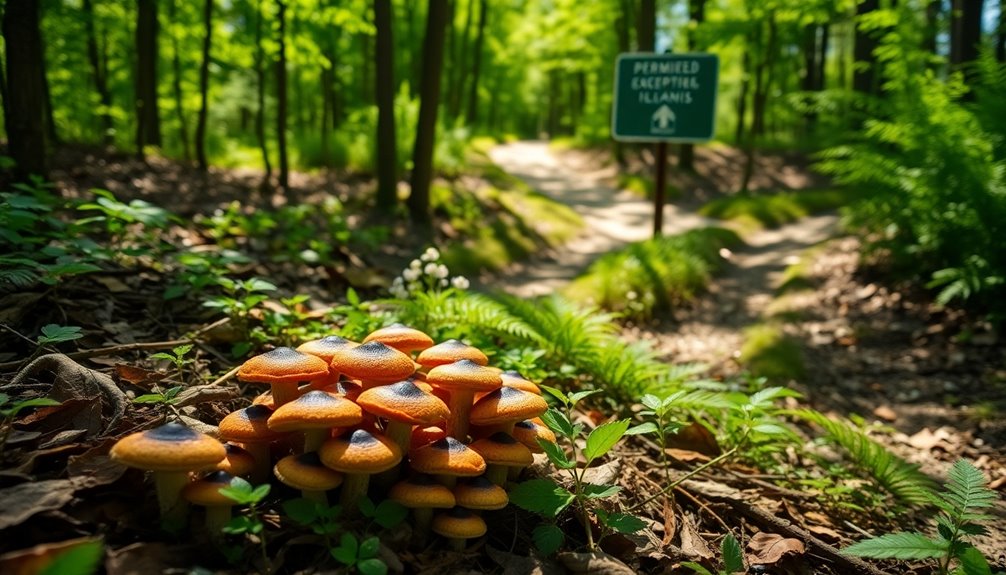
Foraging in Illinois State Parks can be an exciting adventure, but knowing where you can legally forage is essential. Generally, foraging isn't allowed in Illinois forest preserves, and specific restrictions apply to morel mushroom hunting. However, some county forest preserves may permit foraging, but you'll need to verify the local park rules before you head out.
Designated nature areas within parks often prohibit foraging and hunting altogether to protect local wildlife and their habitats. It's vital to check these restrictions to avoid any unwanted surprises.
For instance, in Winnebago County, there haven't been significant foraging issues reported, but it's wise to contact the local Illinois Department of Natural Resources for the latest updates on regulations.
Additionally, local ordinances can impose further restrictions on foraging activities, so always check the specific park and county rules prior to your visit.
Responsible Foraging Practices
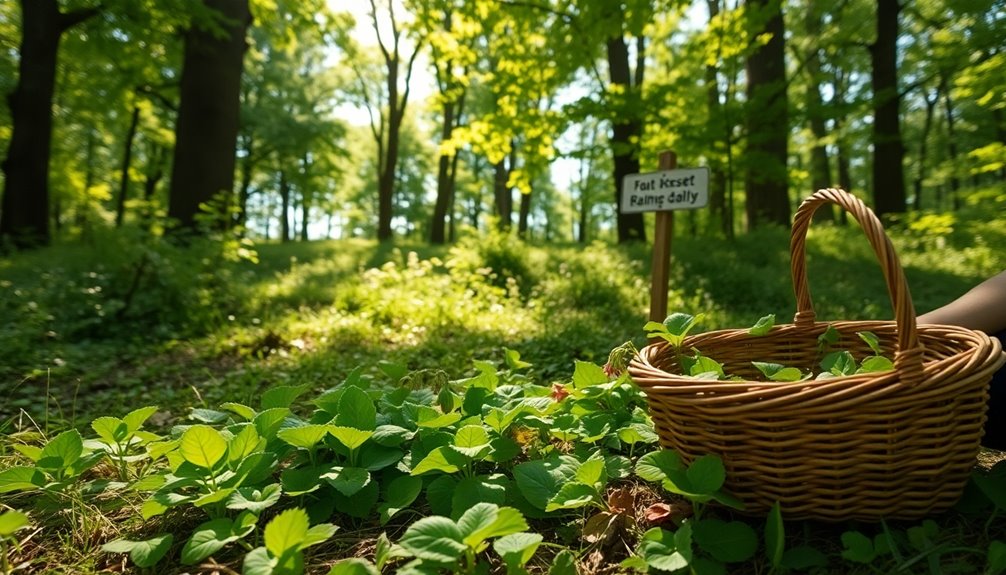
When foraging in Illinois State Parks, it's essential to practice sustainable harvesting techniques to maintain balance in the ecosystem.
Always check local regulations and obtain any necessary permits to guarantee you're foraging responsibly.
Sustainable Harvesting Techniques
Practicing sustainable harvesting techniques guarantees that foragers can enjoy nature's bounty while preserving ecosystems for future generations.
One key aspect of sustainable harvesting practices is taking only what you need. By leaving enough behind, you support the continued growth of the species and overall ecosystem health. Familiarizing yourself with local rules and regulations is essential to understand which plants and mushrooms can be harvested sustainably and any specific limits that may apply.
When foraging, use responsible techniques to minimize damage to plants and their habitats. For instance, cut plants rather than pulling them from the ground, as this helps maintain their roots and allows for regrowth.
Prioritize collecting abundant species that can sustain harvesting without permits, as this supports biodiversity and promotes responsible foraging habits.
Joining local foraging groups or workshops can enhance your knowledge of sustainable practices and help you cultivate a deeper respect for the environment. Engaging with others who share your passion can also provide valuable insights into the best methods for foraging sustainably.
Local Regulation Awareness
Understanding local regulations is essential for anyone looking to forage in Illinois State Parks. While foraging is generally permitted, rules can vary markedly between parks. Always check the specific regulations of the park you plan to visit. Local forest preserves often have stricter restrictions, sometimes prohibiting the collection of plants and mushrooms entirely.
It's important to obtain any necessary permits for foraging in designated areas. The Department of Natural Resources outlines specific guidelines that dictate the types and quantities of plants or mushrooms you can harvest. By adhering to these regulations, you not only comply with the law but also contribute to the health of local ecosystems.
Practicing sustainable foraging is imperative. Always take only what you need to allow these ecosystems to thrive. Leave plenty for wildlife and future foragers.
Being aware of local ordinances promotes responsible harvesting and protects vulnerable habitats. This awareness is a key part of enjoying the rich resources that Illinois State Parks offer while ensuring they remain available for generations to come.
Respecting these rules isn't just about legality; it's about stewardship of the natural world.
Identifying Foraging Locations
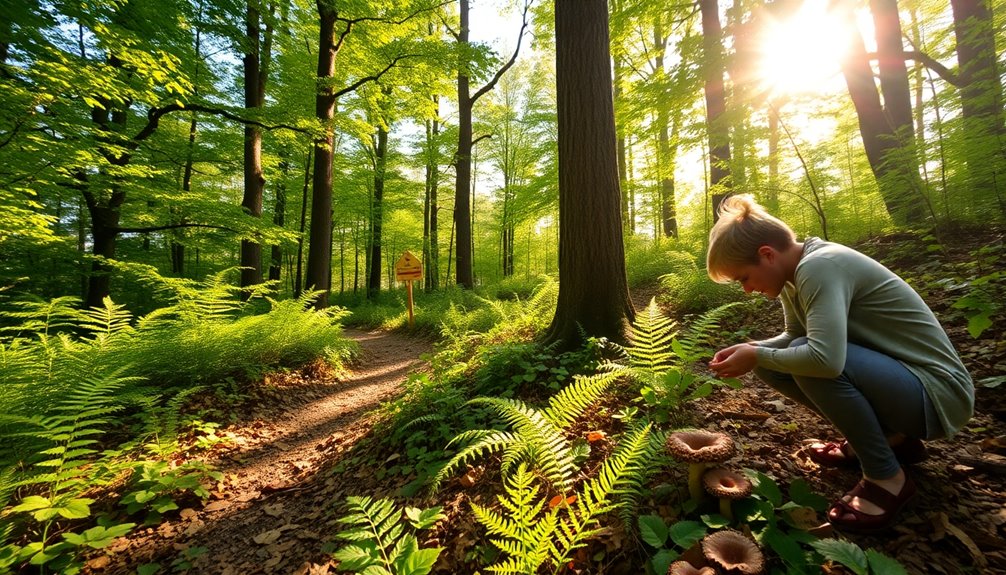
Identifying foraging locations in Illinois State Parks requires careful planning and awareness of regulations. Start by researching specific park rules, as they can vary considerably, especially in designated nature areas where foraging might be prohibited.
Before you head out, consult park staff or local authorities to get accurate information on where you can forage and any restrictions in place.
When identifying mushrooms, focus on abundant species like morel mushrooms or wild berries that thrive in the region. This approach helps guarantee you can sustainably harvest without causing ecological harm.
Local foraging groups and community resources can be invaluable for insights about safe foraging spots and aid in identifying mushrooms correctly.
Always respect private property boundaries while foraging. Trespassing can lead to legal issues and disrupt relationships with landowners.
By staying informed and respecting rules, you'll not only enhance your foraging experience but also contribute positively to the ecosystem. Being aware of your surroundings and the regulations guarantees that you'll enjoy the bounty nature offers while preserving it for future generations.
Happy foraging!
Benefits of Foraging
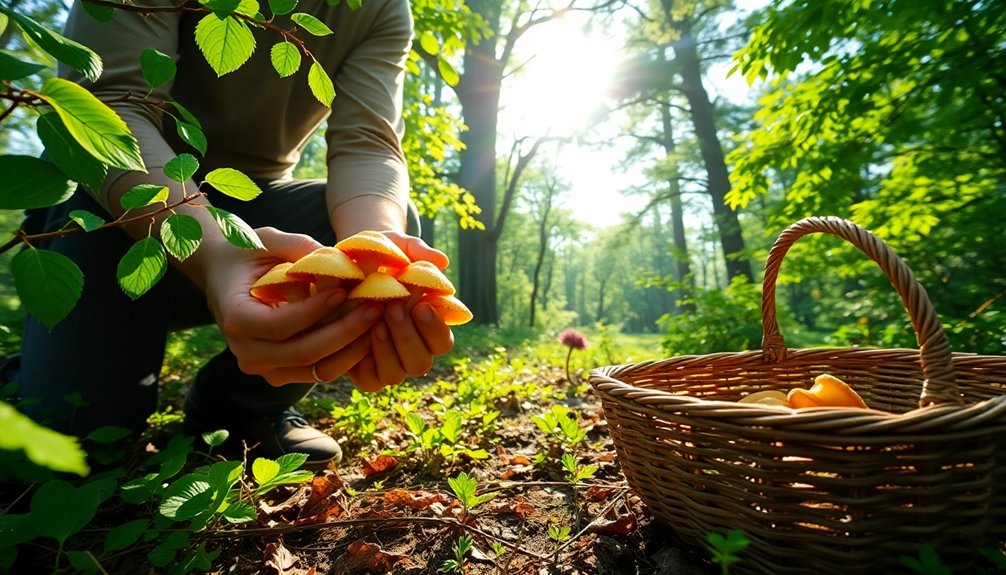
Foraging in Illinois State Parks offers a unique opportunity to connect with nature and enhance your appreciation for the environment. When you engage in foraging, you immerse yourself in the local ecosystem, gaining a deeper understanding of its biodiversity. This hands-on experience promotes physical activity and encourages outdoor exploration, which contributes to your overall health and well-being while you soak in the natural beauty around you.
By learning about and utilizing wild plants, mushrooms, and berries, you not only expand your knowledge of local flora but also embrace sustainable practices. Responsible foraging can support local wildlife and maintain ecological balance, ensuring that plant populations thrive for future generations. Additionally, many regions, such as Wisconsin's wild edibles, offer a diverse array of foraging options that can inspire your adventures.
Additionally, foraging can be a social activity. It encourages community involvement, allowing you to share your experiences and knowledge with fellow enthusiasts and nature lovers.
Whether you're foraging alone or with friends, the connections you build through this shared passion enhance your experience and deepen your appreciation for the environment.
In short, foraging in Illinois State Parks enriches your life in various ways, from health benefits to fostering a sense of community.
General Park Rules
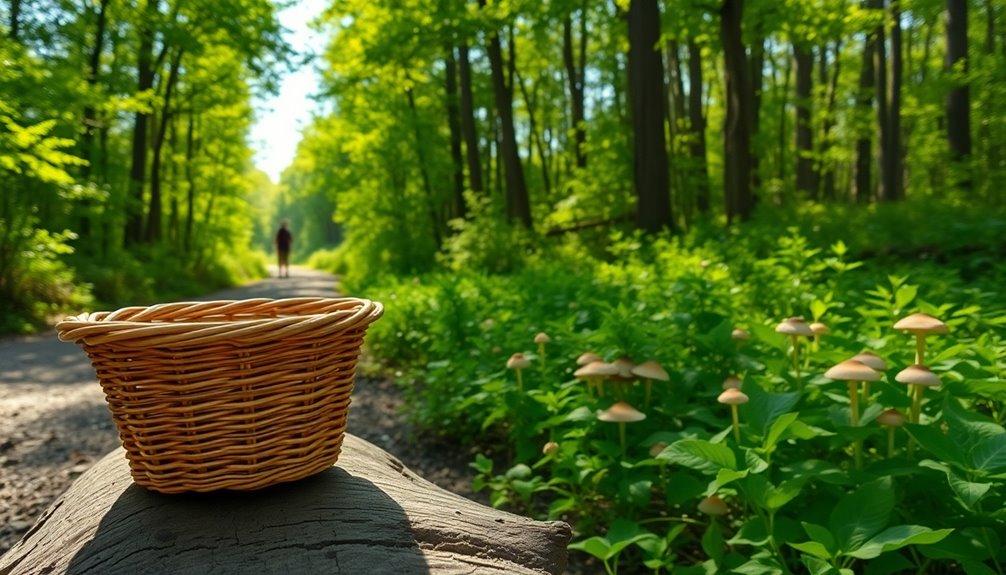
When you visit Illinois State Parks, it's important to be aware of the general rules that help protect these natural spaces and guarantee everyone can enjoy them.
First off, the parks are open daily from sunrise to sunset, so make certain to check specific facility hours before you go. Littering is strictly prohibited, and you can contribute by participating in initiatives like the Adopt-A-Site program to keep the environment clean.
If you bring a dog, remember they must be leashed at all times, except in designated Off-Leash Dog Areas; service animals are the only exception to this rule.
To preserve the natural habitats within the parks, motorized vehicles are banned on trails, but personal mobility devices are allowed for individuals with limitations.
Lastly, if you witness any violations of these rules, don't hesitate to report them to the Forest Preserves Police at 708-771-1000. For emergencies, always call 9-1-1.
Wildlife and Environmental Regulations
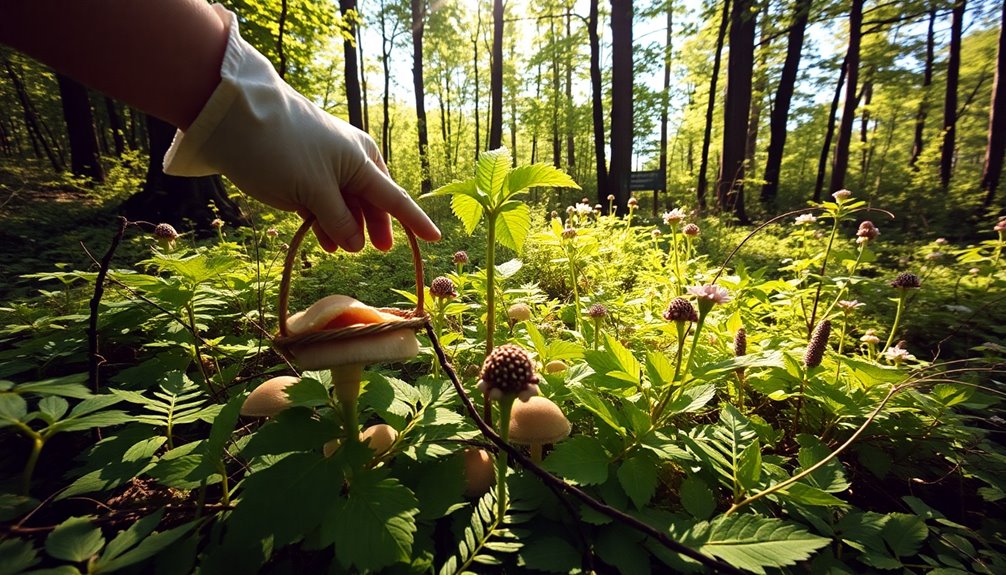
Illinois State Parks prioritize the protection of wildlife and their habitats, ensuring these natural areas remain vibrant and healthy for future generations. To achieve this, strict regulations are in place.
For instance, rules vary across parks, but generally, the collection of plants and animals is strictly prohibited. This includes removing firewood and wildflowers, since such actions threaten local ecosystems.
Feeding wildlife isn't allowed either, as it disrupts their natural behaviors and can harm their survival. Furthermore, hunting is prohibited on Forest Preserves property, and you must avoid disturbing wildlife or their nests to maintain ecological integrity.
The preservation of natural habitats is essential for the health of the environment. Additionally, altering historic or prehistoric ruins and metal detecting within these preserves is strictly against the rules.
These regulations help safeguard both cultural and natural resources. Management practices focus on controlling invasive species and maintaining biodiversity, emphasizing the importance of a balanced ecosystem.
Alcohol and Cannabis Rules
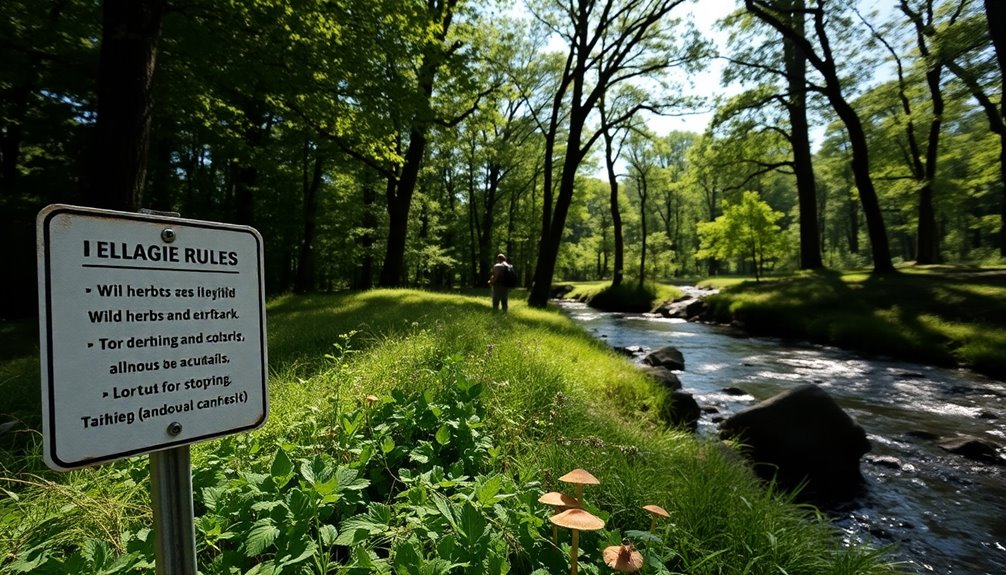
When foraging in Illinois State Parks, it's important to know the rules about alcohol and cannabis.
You can't consume alcohol within 50 feet of parking lots, and glass containers are a no-go.
As for cannabis, it's completely banned in Forest Preserves, so be sure to understand these regulations to avoid fines.
Alcohol Consumption Regulations
Visiting state parks can be a delightful experience, but it's important to know the rules surrounding alcohol and cannabis consumption to guarantee a smooth outing.
When it comes to alcohol consumption in Illinois State Parks, there are specific regulations you need to follow. First, alcohol is prohibited within 50 feet of parking lots, so plan your location wisely. Additionally, glass containers aren't allowed, so opt for cans or other non-glass options to avoid any issues.
Some specific parks may require permits for the consumption of alcohol, which means you should check for any Alcohol Free Sites before your visit. It's best to do your homework in advance to confirm you're compliant with all rules and regulations.
Remember that while you might enjoy a drink in nature, adhering to these guidelines is essential for a safe and enjoyable experience. Ignoring these rules can lead to unwanted consequences, so stay informed.
As you prepare for your outdoor adventure, make sure you're aware of the specific park's alcohol consumption policies to avoid any legal troubles. Enjoy your time responsibly!
Cannabis Restrictions Overview
Understanding the regulations surrounding cannabis use in state parks is just as important as knowing the rules for alcohol consumption. In Illinois, cannabis consumption is strictly prohibited within Forest Preserves. If you're caught using cannabis, you could face citations and fines, so it's essential to adhere to these cannabis restrictions.
For medical cannabis users, carrying valid identification is a must. If you're a minor, you'll need parental notification to use medical cannabis, adding another layer to the set of rules you need to follow.
While you might think about enjoying a drink alongside your foraging, remember that alcohol isn't allowed within 50 feet of parking lots in Forest Preserves, and glass containers are banned outright. Certain areas may also require permits for alcohol consumption, so it's wise to check for Alcohol Free Sites before heading out.
Violating cannabis or alcohol regulations can lead to serious legal repercussions. Staying informed about these rules guarantees you have a safe and enjoyable experience in the beautiful Illinois state parks without running into trouble.
Always prioritize understanding the regulations to make the most of your outdoor adventures.
Trail Use and Etiquette
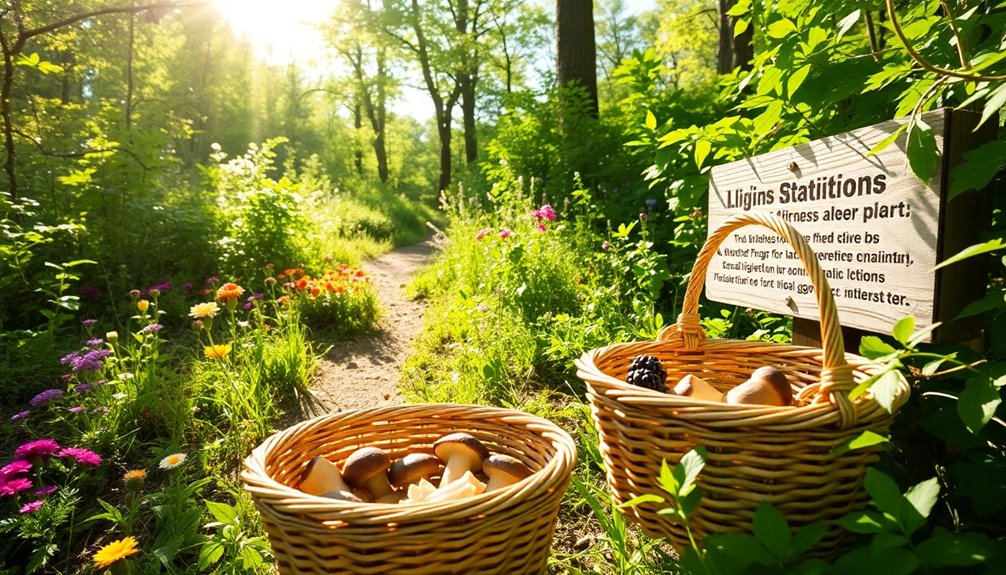
To guarantee a safe and enjoyable experience for everyone, it's essential to follow the established trail use and etiquette guidelines in Illinois State Parks. By sticking to official marked trails, you help preserve these natural habitats and prevent damage. Off-trail riding is strictly prohibited, so be certain to stay on designated paths.
When using the trails, always stay to the right and maintain a single file when possible. This guarantees smooth passage for all users.
Remember, trail users must yield according to specific guidelines: bicycles yield to all other users, while walkers yield to equestrians. Keeping a speed limit of 15 mph is important for safety, so be mindful of your surroundings and pay attention to trail signage.
If you're bringing a dog along, be certain it's leashed at all times. As a responsible owner, you'll need to maintain control to ensure the safety of wildlife and other visitors.
Following these trail use and etiquette rules helps everyone enjoy the beauty of Illinois State Parks while protecting the environment for future generations.
Frequently Asked Questions
Can You Forage in Illinois State Parks?
Yes, you can forage in Illinois State Parks, but you need to know the specific regulations for each park.
Some areas allow it where hunting is permitted, while others might prohibit foraging completely. Always check with the Illinois Department of Natural Resources before you go.
Remember to practice sustainable foraging—take only what you need and respect the local ecosystem.
Being aware of the rules helps protect nature while you enjoy your foraging adventures.
Can I Forage in a State Park?
Yes, you can forage in some state parks, but it's essential to check specific regulations first.
Each park has different rules, and some may allow you to collect certain plants or mushrooms, while others restrict foraging to protect the environment.
Make sure to respect local ordinances and sustainable practices by taking only what you need.
Always verify guidelines with park staff or the local Department of Natural Resources before you start foraging.
How Do You Forage Legally?
To forage legally, start by researching local laws and regulations in your area.
Check with park authorities to understand specific rules for foraging, as they can vary widely. Always obtain necessary permits if required and focus on sustainable practices—only take what you need and leave some behind to maintain ecosystem balance.
Pay attention to protected species, and make sure you know which plants, berries, or mushrooms are safe to collect and consume.
Can I Forage on Public Land?
Foraging on public land can feel like a treasure hunt, but it's crucial to tread carefully.
You can, in many cases, forage, but local laws vary widely. Always check specific regulations for the area you're in; some places might prohibit it entirely.
Respect the environment by adhering to sustainable practices and protecting wildlife habitats.
When in doubt, consult local authorities to guarantee you're not stepping on any toes while searching for nature's bounty.
Conclusion
To sum up, foraging in Illinois state parks can be a rewarding experience, but you need to know the rules. By understanding regulations and practicing responsible foraging, you'll not only stay out of hot water but also enjoy nature to its fullest. Remember to tread lightly and respect wildlife while you're at it. So, pack your basket and hit the trails, because the great outdoors is waiting for you to explore its hidden treasures!

